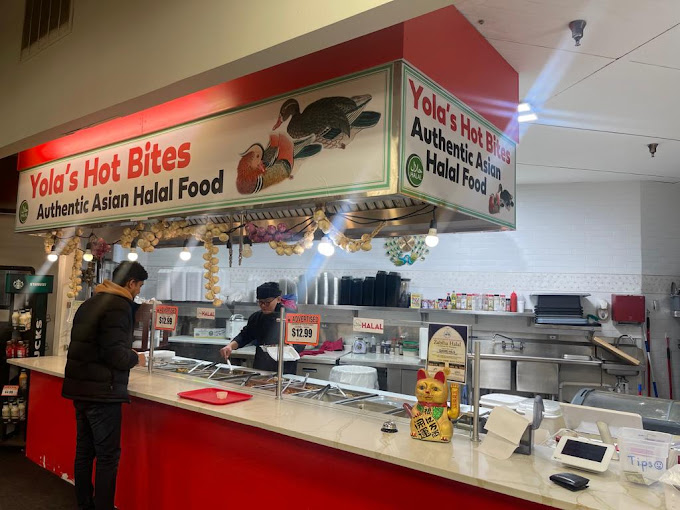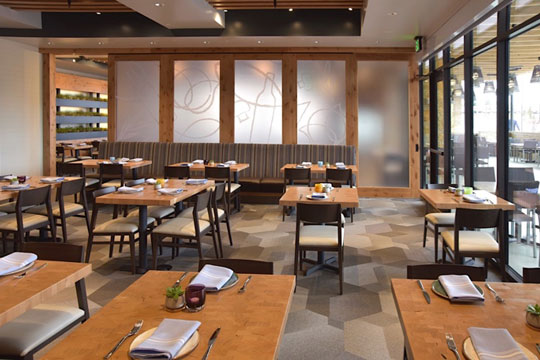Savor Genuine Eastern Cuisine With a Pan-Asian Twist for a Culinary Experience
Embarking on a cooking journey with authentic Eastern cuisine, enhanced with a Pan-Asian spin, uses an unique possibility to discover the abundant tapestry of flavors that specify the region's diverse culinary traditions. As you contemplate these attracting recipes, take into consideration the social stories and historic influences that form them, each bite offering a story waiting to be discovered. Chinese food Islamabad.

Discovering Pan-Asian Flavors
In the realm of global gastronomy, Pan-Asian food stands apart for its exceptional diversity and the harmonious interplay of tastes from numerous Oriental societies. This culinary technique celebrates the abundant customs and unique components found throughout the continent, producing a tapestry of tastes that is both intriguing and gratifying. Trick to Pan-Asian cuisine is its capability to balance different flavors-- wonderful, salted, spicy, and sour-- while highlighting the freshness and top quality of each ingredient.
From the umami-rich soy sauce of Japan to the intense chili peppers of Thailand, Pan-Asian food offers an extensive scheme of tastes. These elements are commonly combined in creative ways, enhancing meals with layers of intricacy. As an example, using great smelling natural herbs such as lemongrass and cilantro, typical in Vietnamese and Thai food, adds a rejuvenating brightness to meals, while the incorporation of coconut milk provides a velvety, abundant structure.
The emphasis on fresh produce and aromatic spices makes certain that each dish is not only a banquet for the preference buds yet also for the senses. Pan-Asian food invites diners to start a cooking trip, checking out the substantial and varied landscapes of Oriental gastronomy with every bite.
Blend Meals to Attempt
While Pan-Asian cuisine is commemorated for its typical tastes, the contemporary culinary landscape is increasingly welcoming blend recipes that blend these timeless aspects with impacts from other regions. This ingenious approach not just honors the rich heritage of Eastern culinary arts yet likewise introduces unique taste experiences that interest contemporary tastes buds.
An archetype of such a blend dish is the Korean-Mexican taco, where marinaded bulgogi beef is wrapped in a warm tortilla, topped with kimchi and a hot gochujang-infused salsa. This combination marries the bold, full-flavored tastes of Korea with the lively, fresh elements of Mexican food. Similarly, sushi burritos have actually obtained popularity, joining together the delicate virtuosity of Japanese sushi with the passionate, hand-held benefit of a burrito, usually including blend ingredients like tempura shrimp and avocado with a drizzle of wasabi mayo.
One more notable dish is Thai curry ramen, which infuses the luscious, fragrant seasonings of Thai curry into the calming brew of traditional Japanese ramen, producing a harmonious mix that entices the senses. These blend recipes expand past mere novelty; they stand for a culinary dialogue between cultures, encouraging exploration and technology in the globe of Pan-Asian food.
Important Components and Flavors
To absolutely appreciate Pan-Asian food, one should comprehend the important active ingredients and spices that create its structure. This varied culinary design draws from a rich tapestry of Asian practices, utilizing a harmonious mix of appearances and flavors.
Aromatic elements are crucial, with ginger, lemongrass, and garlic being ubiquitous across various Pan-Asian dishes. These components give an aromatic base that boosts the intricacy of flavors. Flavors such as star anise, cardamom, and cinnamon present heat and character, resembling influences from areas like China and India.

Cooking Methods and Tips
Grasping the art of Pan-Asian food requires experience with its unique food preparation techniques, each adding to the vivid tapestry of tastes this culinary tradition is commemorated for. Central to these approaches is the stir-fry, a quick food preparation strategy that protects the dietary honesty and vivid colors of active ingredients. Using a frying pan, the stir-fry technique enables also warm circulation, essential for achieving the characteristic texture and flavor equilibrium of Pan-Asian recipes.
An additional basic method is steaming, specifically widespread in Chinese food. This mild technique preserves the all-natural tastes and nutrients of active ingredients, making it ideal for seafood and my website veggies. Dumplings, a beloved staple, typically gain from steaming, resulting in soft, succulent textures.
Grilling, likewise integral, gives great smoky midsts to dishes such as Korean bulgogi or Japanese yakitori (pan asian dining Islamabad). This strategy commonly includes marinating active ingredients, allowing tastes to permeate deeply before food preparation over an open fire or warmer
Last but not least, grasping the art of balancing tastes-- pleasant, sour, salty, bitter, and umami-- is essential. Properly layering these components can boost a recipe from common to extraordinary, supplying a complicated and pleasing culinary experience that personifies the essence of Pan-Asian food.
Dining Experiences Worldwide
Around the world, Pan-Asian food uses an unmatched dining experience, commemorated for its rich tapestry of tastes and dynamic presentations. This culinary sensation has gone beyond social boundaries, capturing the hearts and tastes buds of food fanatics worldwide. In multicultural cities fresh York, London, and Sydney, Pan-Asian dining establishments offer as melting pots where cooking traditions from Thailand, Japan, China, and beyond converge, supplying diners with an eclectic mix of recipes that highlight the area's diversity.
The international charm of Pan-Asian food lies in its click ability to provide both authenticity and development. Chefs skillfully marry standard components such as lemongrass, soy sauce, and miso with modern strategies, resulting in dishes that are both familiar and refreshingly brand-new. This fusion allows diners to get started on a culinary journey that respects heritage while embracing modernity.
Moreover, eating experiences are boosted via attentively made settings that mirror the principles of Pan-Asian looks. From minimalist Japanese-inspired interiors to vibrant Thai-themed rooms, each dining establishment offers a special setting that matches the cooking offerings. Consequently, patrons are not merely eating a dish however partaking in a cultural experience, making Pan-Asian dining a truly international sensation.
Verdict
The expedition of Pan-Asian food provides a profound understanding of the detailed interaction of tastes and cooking customs across Asia. By welcoming blend recipes such as Thai curry ramen and sushi burritos, the culinary trip not just highlights the versatility of typical components however also from this source showcases cutting-edge modern-day strategies. This gastronomic experience, enriched by important seasonings and cooking approaches, supplies an one-of-a-kind chance to appreciate the multiculturalism and culinary creativity that specify Pan-Asian food on an international range.
Getting started on a cooking journey via authentic Asian cuisine, enhanced with a Pan-Asian twist, supplies a distinct chance to discover the rich tapestry of flavors that specify the area's diverse culinary customs.In the realm of international gastronomy, Pan-Asian food stands out for its impressive variety and the unified interplay of flavors from numerous Asian cultures. Key to Pan-Asian cuisine is its capacity to balance different tastes-- pleasant, salty, spicy, and sour-- while highlighting the freshness and quality of each ingredient.
